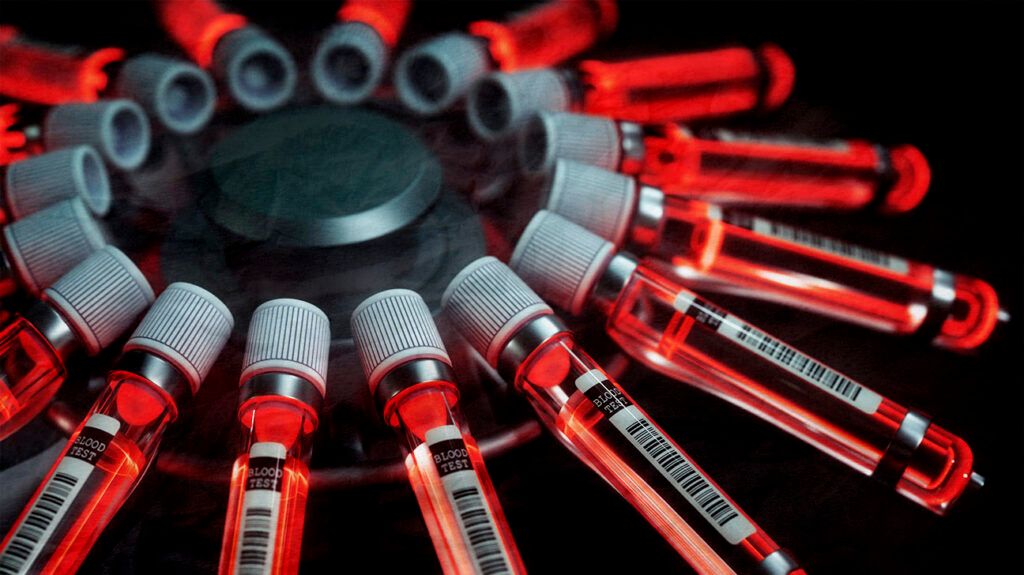Viral load refers to the amount of HIV in a person’s blood. HIV treatments aim to reduce the viral load until the virus is no longer detectable, which means it is also untransmittable.
People who have had an undetectable viral load for at least 6 months cannot transmit HIV via sexual contact.
This article looks at what viral load means for people living with HIV and their partners, the links between viral load and CD4 levels, and how healthcare professionals test and monitor these levels.

Viral load is the amount of HIV in a person’s blood.
When a person contracts HIV, the virus replicates in their blood. The more copies of the virus there are, the higher a person’s viral load will be.
If the blood contains a high number of HIV copies, it suggests that other bodily fluids, such as vaginal fluid and semen, also contain a high number.
Health professionals measure HIV viral load in copies per milliliter of blood (copies/ml). They can use this measurement to check the status of HIV after diagnosis and then to monitor the progress of HIV treatments.
The main aim of HIV treatments is to reduce the viral load to the point where there are so few copies of the virus left that it is undetectable in the blood.
A health professional will usually test a person’s viral load when they first diagnose HIV. People with HIV will also require repeat viral load tests throughout their lives to monitor the condition. They should undergo testing once every 6 months and possibly more often during the first 1–2 years of treatment.
A person should also get a test after any alteration in their medication or if their symptoms change. If a test reveals that the viral load is increasing, a healthcare professional may need to adjust their treatment.
Learn more about an undetectable viral load, tests, and treatment.
Healthcare professionals can test HIV viral load using a simple blood test. No preparation is necessary.
During the test, a healthcare professional will draw a small amount of blood and send the sample to the labs to test the viral load and CD4 count. CD4 cells are a type of immune cell that HIV attacks.
Once the results are back, the doctor may call to discuss them.
Below is a summary of what the viral load blood test results may mean. The levels will vary based on the stage of the condition and the stage of treatment.
Detectable viral load
When healthcare professionals see detectable levels of HIV in a viral load test, it may help them guide treatment. A person’s viral load may be high if they have not yet received any treatment, if they stop taking their medication as per instructions, or if the virus develops resistance to medications.
People can also experience small rises in viral load during treatment. This is known as a viral blip. These small increases usually resolve on their own as a person continues their medication.
However, if the viral load continues to increase or tests continue showing frequent blips, this may require further investigation.
Learn more about the signs that HIV treatment is not working.
Undetectable viral load
After starting antiretroviral therapy (ART), a person’s HIV viral load tests may come back with low numbers. When this occurs, the treatment is working, and HIV is no longer progressing.
The lower the viral load, the lower the risk of transmitting the virus to others.
Having an undetectable viral load for
Transmission via pregnancy and childbirth, breastfeeding, or sharing syringes may still be possible, but the risk is substantially less.
Many tests define an undetectable viral load as less than 40 copies/mL in the blood, but different laboratories may have different thresholds. The test results may say: target not detected, ND, or negative.
Most people who start ART reach an undetectable viral load in
When someone contracts HIV, the virus begins to take over specific cells in the immune system, known as CD4 cells.
When the CD4 cells replicate, the HIV cells inside them also replicate. HIV hijacks the cellular machinery of CD4 cells to reproduce and shed more HIV, which means the viral load increases.
As the HIV viral load increases, the number of healthy CD4 cells decreases as they die, creating HIV copies. This puts a person at higher risk of infections.
Treatment aims to lower viral load, allowing the immune system to rebuild a healthy CD4 count. The number of CD4 cells in the person’s body will increase as their viral load falls. A higher CD4 count means the immune system is better able to fight infections.
HIV and AIDS resources
For more in-depth information and resources on HIV and AIDS, visit our dedicated hub.
HIV viral load refers to the amount of HIV present in a person’s blood. Higher numbers typically indicate that they have not yet received HIV treatment or that their treatment is not currently working.
A low viral load may mean treatment is working. When the viral load is undetectable for at least 6 months, it is untransmittable via sex.
However, HIV is a chronic condition. While the virus can become undetectable, some copies remain in the blood. People must continue to take their HIV medication as prescribed to keep their viral load undetectable.
With effective management, people living with HIV can experience the same quality of life as a person without HIV.
